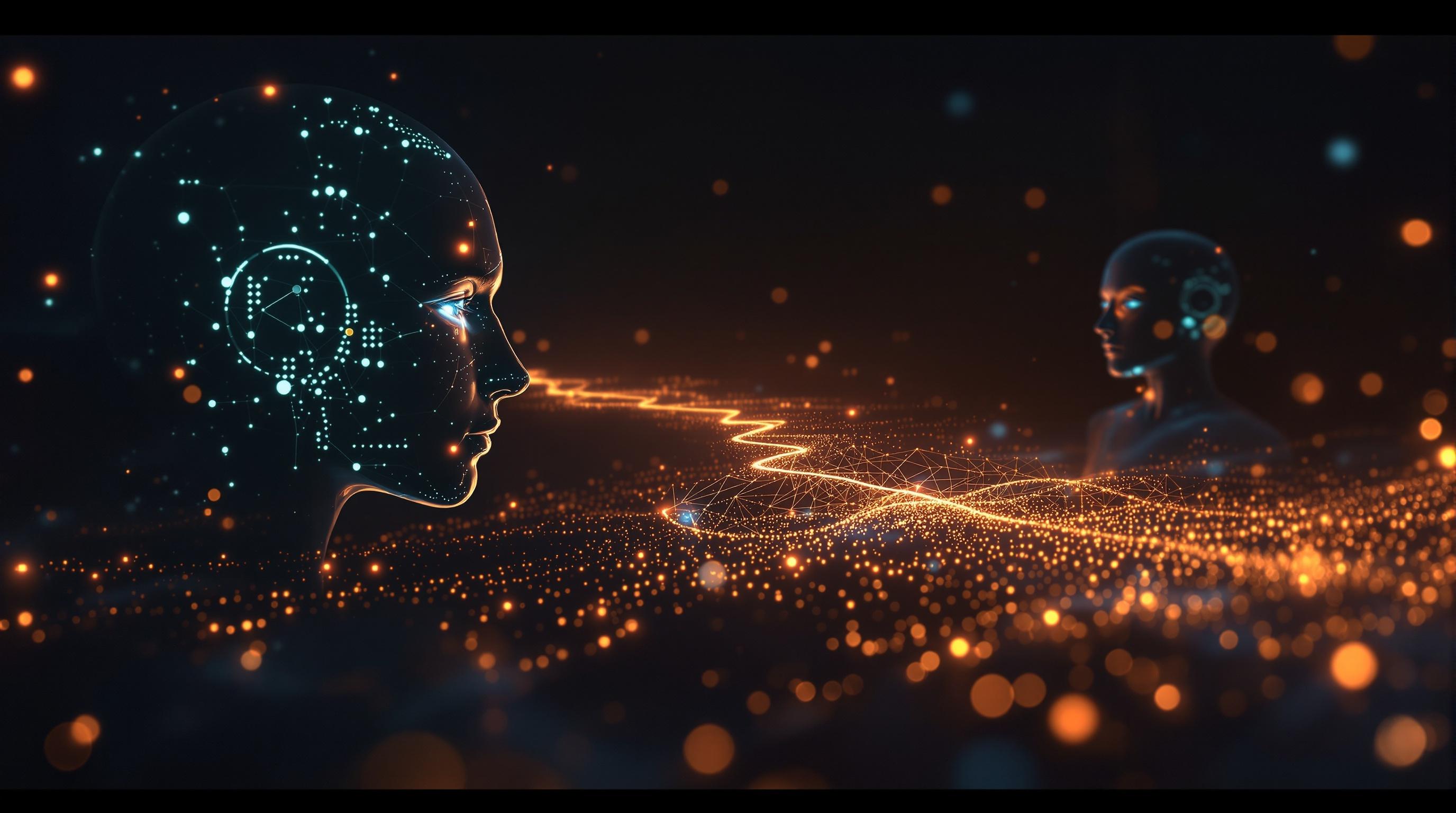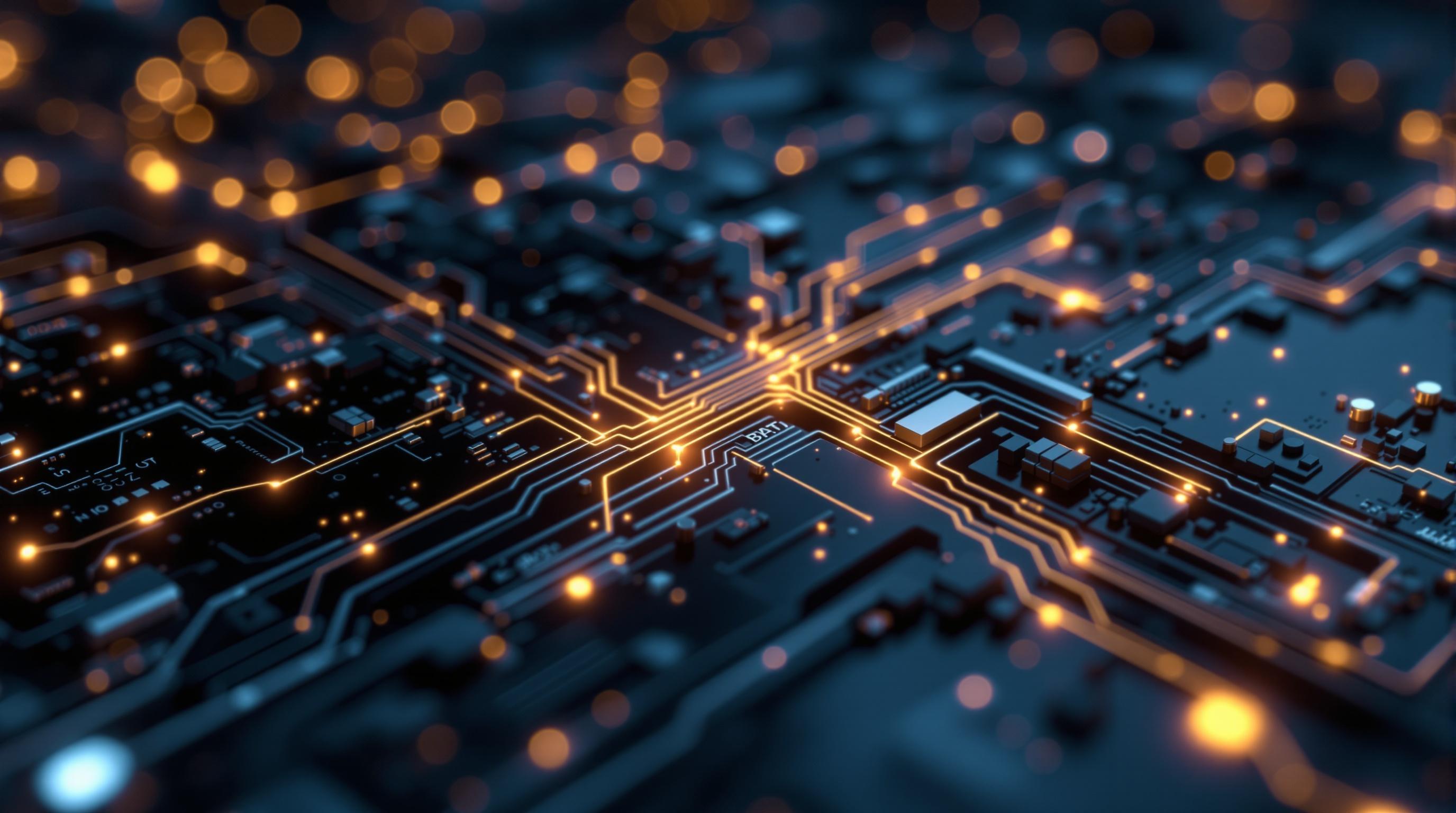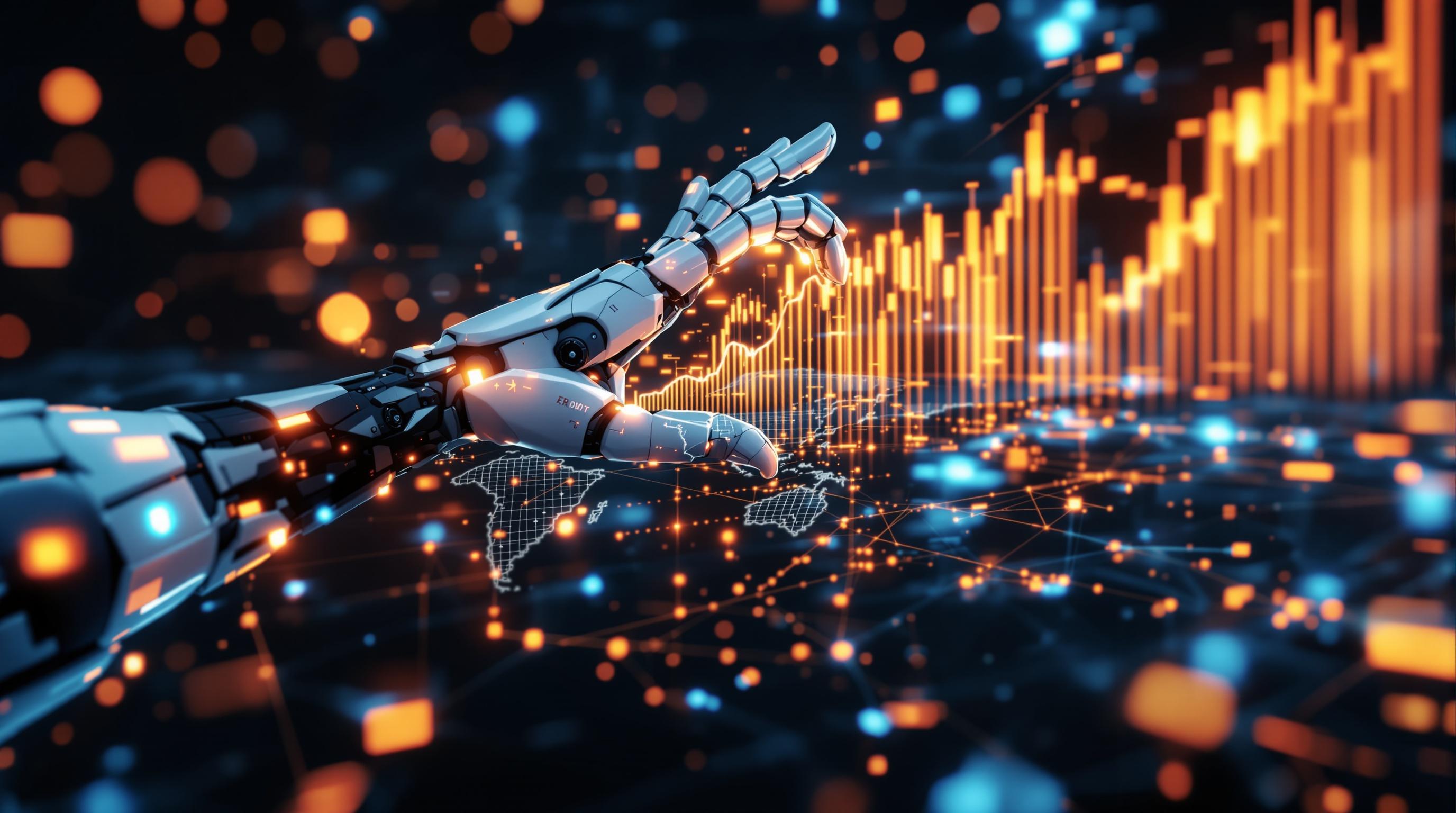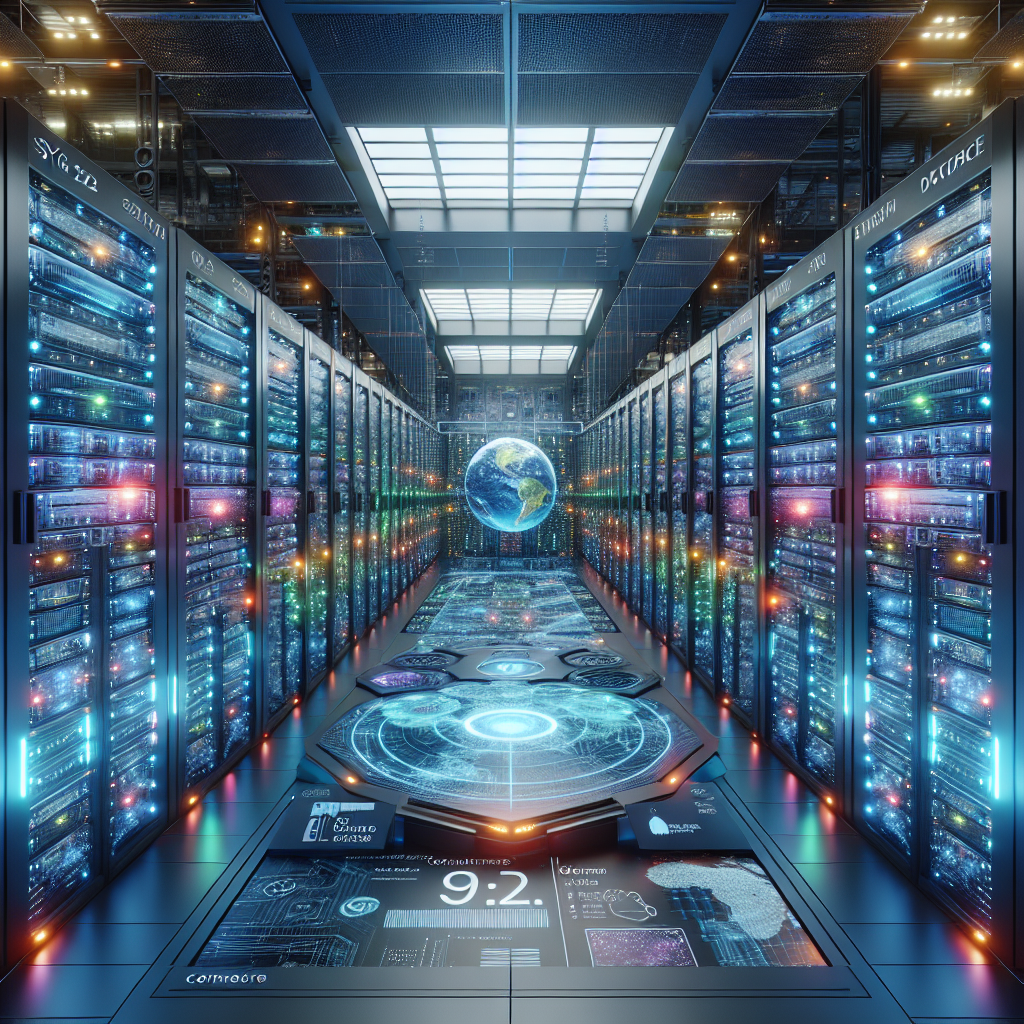AI Revolution: NVIDIA's Robot Brain, Google's Economic Vision, and China's AI Agent Challenge 25. August 2025

This week, AI made significant strides into the physical and economic realms, with NVIDIA's "robot brain" and Google's AI-driven economic vision leading the charge. Discover how this shift will impact industries and economies, and as an actionable insight, explore how AI integration can optimize your own processes to boost productivity and unlock new opportunities.
NVIDIA Unveils 'Robot Brain' – A Revolution in Physical AI
Imagine a world where robots can reason, adapt, and assist us with complex tasks, much like a helpful human partner. NVIDIA is bringing that vision closer to reality with its groundbreaking new robotics AI platform, essentially introducing what they call a "new brain for robots."
Introducing the Cosmos Reason Model
At the heart of this platform lies the Cosmos Reason model, a sophisticated 7-billion-parameter vision-language-action system. Think of it as the robot's central nervous system, allowing it to perceive its environment, understand natural language instructions, and translate those insights into coordinated physical actions. Unlike traditional robots that rely on pre-programmed routines, this AI model empowers robots to perform human-like reasoning for complex, multi-step tasks. For instance, a robot equipped with the Cosmos Reason model could not only identify a cluttered table but also strategize and execute a plan to clear it, moving objects one by one and adapting to unforeseen obstacles.

Real-World Applications and Partnerships
The implications of this technology are vast, and several major players are already on board. Partners like Uber, Magna, and VAST Data are actively implementing NVIDIA's robotics platform in diverse applications, from autonomous vehicles to advanced manufacturing. This wide adoption demonstrates the platform's versatility and its potential to revolutionize various industries. Imagine self-driving cars navigating complex urban environments with enhanced decision-making capabilities, or robots in warehouses optimizing logistics with unprecedented efficiency.
A Developer Ecosystem of Millions
NVIDIA's robotics platform isn't just a product; it's a thriving ecosystem. Boasting over 2 million developers, the platform fosters collaboration, innovation, and the rapid development of new robotic applications. This vibrant community ensures that the technology continues to evolve and adapt to emerging needs, accelerating the progress of robotics as a whole. Furthermore, resources like Hugging Face, a leading open-source platform for machine learning, can further accelerate development and experimentation in the field.
NVIDIA's Strategic Pivot to 'Physical AI'
This robotics platform signifies more than just an incremental improvement; it represents a strategic shift for NVIDIA toward "Physical AI." NVIDIA sees Physical AI as the company's next trillion-dollar opportunity, envisioning a future where AI extends beyond the digital realm and into the physical world, fundamentally changing how we interact with machines and our environment. This transition is facilitated by tools like AutoGPT, an experimental open-source application that applies the capabilities of language models to various tasks.
NVIDIA's unveiling of its "robot brain" marks a pivotal moment in the evolution of AI, paving the way for a future where robots are not just programmed machines but intelligent partners capable of solving complex problems and enhancing our daily lives. The emergence of these powerful tools is frequently covered in AI News, keeping us informed on the latest breakthroughs.

Google's Economic Vision: How AI is Poised to Drive Trillions in Growth
Forget self-driving cars; the real AI revolution might be measured in trillions of dollars. Alphabet President Ruth Porat recently took to the stage at Jackson Hole, not to discuss monetary policy, but to highlight AI's transformative potential as a key economic driver.
AI: A Trillion-Dollar Catalyst
Porat's message was clear: artificial intelligence isn't just a technological marvel; it's poised to unleash unprecedented economic growth. We're talking about a potential influx of trillions of dollars into the global economy, driven by AI-powered innovation across various sectors. This isn't just hype; it's a projection based on AI's capacity to optimize processes, boost productivity, and unlock new markets. Think of it as the industrial revolution, but on warp speed, fueled by algorithms and data.
"AI is not just a technological marvel; it's poised to unleash unprecedented economic growth."
Fighting Financial Crime with AI
One compelling example of AI's economic impact lies in the realm of finance. Google Cloud AI is empowering banking clients to enhance their financial crime detection capabilities. By leveraging machine learning algorithms, these institutions can identify suspicious transactions and patterns with far greater accuracy and speed than traditional methods. This not only reduces financial losses due to fraud and money laundering but also strengthens the integrity of the financial system as a whole. It’s like having a super-powered detective constantly analyzing data and flagging potential threats.
AlphaFold: Accelerating Scientific Discovery
Beyond finance, AI is revolutionizing scientific research. The DeepMind AlphaFold breakthrough, which accurately predicts protein structures, is a prime example. This AI-powered tool is accelerating the pace of scientific discovery, allowing researchers to understand diseases, develop new drugs, and engineer novel materials with unprecedented speed. The economic implications of this accelerated innovation are vast, potentially leading to breakthroughs in healthcare, agriculture, and materials science. It's akin to providing scientists with a powerful microscope that can see the building blocks of life in exquisite detail, unlocking new possibilities for innovation.
CBO's Endorsement: A Productivity Boost
Even the Congressional Budget Office (CBO) is acknowledging AI's potential to boost productivity. Their projections indicate that AI could lead to significant gains in economic output, driven by increased efficiency and automation across various industries. This endorsement from a non-partisan organization lends further credibility to the notion that AI is not just a passing fad, but a transformative force with the potential to reshape the economic landscape.
The CBO's projections indicate that AI could lead to significant gains in economic output.
Google's economic vision, articulated by Ruth Porat at Jackson Hole, paints a compelling picture of an AI-driven future, where innovation flourishes, productivity soars, and trillions of dollars are added to the global economy. The potential benefits are immense, and as AI continues to evolve, its impact on the world's financial systems will only continue to increase. Next, we will examine how China is approaching the AI revolution with its own unique challenges, particularly in the realm of AI agents. You can follow these updates and more in our section dedicated to AI News.

China's Zhipu AI Challenges Western Dominance with Free AI Agent
While the West is captivated by advancements from companies like OpenAI and Google, China's AI sector is making significant strides of its own, and the recent launch of a free AI agent by Zhipu AI (Z.ai) is a clear indicator of this growing competition. This move not only democratizes access to advanced AI capabilities but also challenges the dominance of Western models in the global market.
AutoGLM Rumination: A Free AI Agent from Zhipu AI
Zhipu AI, also known as Z.ai, has officially launched AutoGLM Rumination, a free AI agent designed to perform a variety of complex tasks. This AI agent is not just another chatbot; it's designed to be a comprehensive tool capable of conducting research, performing web searches, planning travel itineraries, and even generating detailed reports. Consider it your AI assistant, ready to tackle a wide range of tasks, all without the burden of a subscription fee. The launch of AutoGLM marks a significant step in making advanced AI tools accessible to a broader audience, mirroring the mission to democratize AI, similar to efforts seen in open-source communities. It's worth noting that AI agents are the direction the field is moving, and you can always keep up with the latest AI News.
Performance and Efficiency
One of the most impressive aspects of AutoGLM is its performance. According to Zhipu AI, this agent is significantly faster and requires fewer computational resources compared to DeepSeek's R1, another powerful AI model. This efficiency is crucial, as it reduces the operational costs associated with running the AI agent, making it a more sustainable and scalable solution.
To illustrate, imagine you're running a small business and need to compile a market research report. With AutoGLM, you can accomplish this task more quickly and with less computing power compared to other agents, potentially saving you both time and money. It achieves this speed through architectural optimizations in their GLM-4.5 model.
Capabilities and Applications
AutoGLM's capabilities extend beyond simple tasks. It can:
Conduct in-depth research: Gathering data from various sources and synthesizing it into a coherent report.
Perform complex web searches: Sifting through vast amounts of online information to find specific answers.
Plan detailed travel itineraries: Taking into account your preferences, budget, and schedule.
Write comprehensive reports: Presenting findings in a clear, concise, and well-structured manner.
These capabilities make AutoGLM a versatile tool for a wide range of applications, from academic research to business intelligence. The ability to automate these tasks not only saves time but also allows users to focus on more strategic and creative endeavors. If you are interested in prompt engineering strategies, consider learning more about Prompt Engineering.
Strategic Backing and Future Plans
Zhipu AI's ambitions are backed by solid financial and strategic support. The company has secured substantial government funding, indicating the strategic importance of AI development in China. Furthermore, Zhipu AI has plans for an IPO, which would provide additional capital to fuel its growth and innovation. This combination of government support and private investment positions Zhipu AI as a major player in the global AI landscape.
GLM-4.5: The Engine Behind AutoGLM
The foundation of AutoGLM is the GLM-4.5 model, a large language model boasting an impressive 355 billion parameters. What sets this model apart is its native Agent capabilities, meaning it's designed from the ground up to function as an intelligent agent. This native integration allows for more seamless and efficient task execution compared to models that are retrofitted with agent capabilities. Models like this are built using frameworks like TensorFlow and PyTorch.
The GLM-4.5 model is not just about scale; it's about smart architecture and efficient design.
Challenging Western Dominance
The launch of AutoGLM and the capabilities of the GLM-4.5 model represent a direct challenge to the Western dominance in the AI field. By offering a free, high-performance AI agent, Zhipu AI is lowering the barrier to entry for users and developers alike. This increased accessibility could accelerate the adoption of AI in various sectors, potentially leading to new innovations and applications. Keep up to date with any new innovations at AI News. This move also puts pressure on Western companies to innovate and offer more competitive solutions.
In conclusion, Zhipu AI's AutoGLM Rumination is a bold step forward for China's AI industry, showcasing its growing capabilities and challenging the established dominance of Western AI models. With its free availability, impressive performance, and strategic backing, AutoGLM has the potential to significantly impact the global AI landscape and reshape the future of AI accessibility. This advancement highlights the increasingly competitive nature of the AI race and the importance of continued innovation and investment in this transformative technology.

Exposed: OpenAI's Secret Reliance on Google Search Data
The AI world is often painted as a landscape of fierce competition, but sometimes, the most innovative companies rely on their rivals in unexpected ways. It has been revealed that ChatGPT, OpenAI's flagship product, secretly leverages Google Search data to provide its users with real-time answers. This revelation exposes a complex dynamic at play, where one of the leading AI companies relies on its competitor's vast information resources.
The Secret Ingredient: Google Search
While ChatGPT excels at generating human-like text and engaging in conversations, its knowledge is limited to the data it was trained on. To overcome this limitation and provide users with up-to-date information, ChatGPT taps into the power of Google Search. This allows the chatbot to answer queries about current events, breaking news, and other topics that require real-time data. The mechanism behind this integration involves OpenAI using SerpApi, a service that extracts search results from Google and other search engines. Essentially, when a user asks ChatGPT a question requiring recent information, the chatbot queries Google Search via SerpApi, processes the results, and then formulates a response. This entire process happens behind the scenes, leaving most users unaware of the dependency.
SerpApi: The Bridge Between OpenAI and Google
SerpApi acts as the crucial link that enables ChatGPT's access to Google's search results. It's a sophisticated tool that parses the complex HTML structure of search engine results pages (SERPs) and extracts the relevant information in a structured format. This allows ChatGPT to quickly access and utilize the data it needs without having to develop its own web scraping and parsing infrastructure. Using SerpApi provides a reliable and efficient way for ChatGPT to stay informed and deliver accurate, real-time answers to its users.
The Irony of Dependency
This reliance on Google Search presents a somewhat ironic situation. OpenAI, a company striving to compete with Google in the AI space, is simultaneously dependent on Google's data infrastructure to enhance its own product. This dependency highlights the challenges of building a comprehensive AI system from the ground up, especially when competing against a company with vast resources and a well-established data ecosystem. It also raises questions about the long-term sustainability of this arrangement. Can OpenAI truly compete with Google while relying on its search data? This situation exposes the limitations and strategic considerations involved in challenging a dominant player in the tech industry.
Altman's Claim vs. OpenAI's Reality
The revelation of OpenAI's reliance on Google Search also contrasts with statements made by Sam Altman, the CEO of OpenAI. While Altman has publicly downplayed the significance of Google Search in OpenAI's operations, his company's reliance on Google's infrastructure suggests a different reality. This discrepancy underscores the complex narratives that often surround technological innovation and competition. It's a reminder that even the most groundbreaking companies may have dependencies and strategic alliances that are not always apparent to the public eye.
The situation underscores a fundamental challenge in the AI landscape: even those striving to innovate and disrupt may find themselves intertwined with the existing infrastructure of tech giants. This raises critical questions about competition, data access, and the true meaning of independence in the age of AI.
Ultimately, OpenAI's secret reliance on Google Search data serves as a reminder that the AI landscape is far more intricate than it often appears. As AI continues to evolve and reshape our world, understanding these interdependencies will be crucial for navigating the complex challenges and opportunities that lie ahead. This news also highlights the importance of staying informed on AI News to keep abreast of the latest developments in the field.

Meta Partners with Midjourney: A Leap into AI Content Generation
The AI revolution continues to unfold at a breathtaking pace, and one of the most significant developments is the increasing collaboration between tech giants and specialized AI companies. In a move that has sent ripples throughout the industry, Meta has partnered with Midjourney, a powerful AI image generator known for its artistic and photorealistic results, signaling a major shift in how content is created and shared online.
Meta and Midjourney: A Visual Content Powerhouse
Meta's decision to join forces with Midjourney is a strategic one, aimed at empowering its massive user base with the ability to effortlessly generate high-quality visual content. Imagine being able to conjure stunning images directly within your favorite social media apps – that's the vision Meta is bringing to life. This integration will span across Meta's core platforms, including Facebook, Instagram, and WhatsApp, offering users a seamless AI-powered creative experience, a transformative step for content creation across the board. This means users can generate images for:
Facebook: Creating eye-catching posts and enhancing personal profiles.
Instagram: Designing visually compelling content for stories and feeds.
WhatsApp: Crafting unique stickers and personalized images for chats.
Empowering Users Through AI-Driven Creativity
The core benefit of this partnership is that it democratizes content creation. No longer will users be solely reliant on their own photography or stock images. Whether you need a fantastical landscape for a Facebook post, a trendy design for an Instagram story, or a personalized image for a WhatsApp group, Midjourney integrated into Meta's platforms allows users to bring their ideas to life with ease. Think of it as having a professional graphic designer at your fingertips, ready to manifest your imagination into shareable visuals. Meta wants to put the power of AI directly into the hands of its users, unlocking a new era of creativity and expression.
The Billion-Dollar Projection
Beyond the user experience, this partnership is projected to be a major financial boon for Meta. Industry analysts predict that the integration of Midjourney could generate billions in additional revenue. This revenue will likely come from a combination of sources:
Increased User Engagement: Higher quality and more personalized content is expected to drive more user activity across Meta's platforms.
Advertising Revenue: AI-generated images can be used in targeted advertising campaigns, potentially increasing ad effectiveness and click-through rates.
Subscription Models: Meta might introduce premium features or subscription plans that offer enhanced AI image generation capabilities.
Meta: The Emerging AI Content Platform
This strategic alliance with Midjourney signifies a fundamental shift in Meta's identity. Meta is actively transitioning from a social media company to an AI-driven content platform. By embracing AI-powered tools, Meta seeks to empower users, drive engagement, and unlock new revenue streams. This move positions Meta at the forefront of the AI revolution, solidifying its position as a leader in the digital landscape. As AI continues to evolve, we can expect to see even more innovative integrations that redefine how we create, share, and interact with content online. The implications for digital marketing, content strategy, and online communication are profound, marking a new chapter in the ongoing AI evolution. This is also a good time to check out the Top 100 AI tools.

Analysis: AI Enters Physical and Economic Reality - Key Takeaways
The shift is palpable: artificial intelligence is no longer confined to the digital realm of abstract algorithms and theoretical possibilities. It's crashing into our physical reality and reshaping our economic landscape with unprecedented speed.
NVIDIA's Embodied AI: The Robot Brain is Here
NVIDIA, primarily known for its graphical processing units (GPUs), is rapidly transforming into an AI powerhouse. Its development of the "robot brain" isn't just about building more sophisticated robots; it signifies a fundamental shift towards embodied AI. This means AI is now capable of directly interacting with and manipulating the physical world. Think self-driving cars navigating complex traffic scenarios, automated factory lines optimizing production in real-time, or even robotic surgeons performing intricate procedures with unparalleled precision. NVIDIA's technology positions AI as an active agent within physical systems, not just a passive analytical tool. This has huge implications for industries ranging from manufacturing and logistics to healthcare and transportation. It also raises important questions about safety, control, and the future of work. Imagine AI-powered robots building houses, delivering goods, or even assisting in disaster relief efforts – NVIDIA's advancements are making these scenarios increasingly realistic.
Google's Economic Imperative: AI as Essential Infrastructure
Google's narrative around AI is increasingly framed in economic terms. They are positioning AI, particularly Google Gemini, as essential infrastructure, akin to electricity or the internet. Their argument is that AI will be the engine of future economic growth, driving productivity gains, creating new industries, and solving some of the world's most pressing challenges. By framing AI as a foundational element of modern society, Google aims to justify its massive investments in the field and cement its role as a key player in the AI revolution. This strategy extends beyond mere technological advancement; it's about shaping policy, influencing public perception, and ensuring that AI benefits society as a whole. Consider how AI can optimize energy consumption, improve healthcare outcomes, or personalize education – Google's vision sees AI as a vital resource for addressing critical global issues.
China's AI Agent Challenge: A New Era of Competition
China's approach to AI is characterized by a strategic focus on accessibility and affordability. The development of free AI agents, such as Kimi, challenges the Western dominance in the AI market. This strategy forces Western companies to defend their technological advantages and consider how to make their AI solutions more widely available. The competition isn't just about who has the best technology, but also about who can deploy it most effectively and democratize access to its benefits. This competition fosters innovation and drives down costs, ultimately benefiting consumers and businesses alike. The emergence of powerful, free AI agents is reshaping the AI landscape, creating a more level playing field and accelerating the pace of innovation globally.
The Technical Realities: Limitations and Dependencies
While the potential of AI is undeniable, it's crucial to acknowledge its current limitations. OpenAI's reliance on Google's infrastructure highlights the technical dependencies that exist within the AI ecosystem. This dependency underscores the fact that even the most advanced AI models are built upon existing technologies and resources. Overcoming these limitations will require ongoing investment in research and development, as well as a collaborative approach that leverages the expertise of different organizations. The pursuit of true artificial general intelligence (AGI) is a long-term endeavor, and it's essential to address the technical challenges along the way.
Meta's Platform Play: Integrating AI into Existing Ecosystems
Meta's partnership with Midjourney, a powerful AI image generator known for its artistic and photorealistic results, demonstrates the importance of platform integration. By embedding AI tools directly into its social media platforms, Meta is making AI more accessible and user-friendly. This integration transforms how people create and consume content, opening up new possibilities for creativity and expression. Imagine designing custom artwork for your profile, generating personalized stickers, or even creating immersive virtual experiences – Meta's strategy aims to seamlessly integrate AI into everyday digital interactions. This focus on user experience and accessibility is essential for driving widespread adoption of AI technologies.
AI as Fundamental Infrastructure: The Need for New Frameworks
The core takeaway is that AI is rapidly transitioning from a niche technology to a fundamental infrastructure, demanding new frameworks for governance, ethics, and security. As AI becomes more deeply integrated into our lives, it's crucial to address the potential risks and ensure that AI is used responsibly. This requires a multi-stakeholder approach involving governments, industry leaders, researchers, and the public. Establishing clear ethical guidelines, developing robust security protocols, and fostering transparency are essential for building trust and maximizing the benefits of AI while minimizing the potential harms. This also means developing Prompt Engineering guidelines to ensure AI systems provide unbiased and factual information. Just as we developed regulatory frameworks for electricity and the internet, we must now create a new framework for AI that promotes innovation while safeguarding our values and interests.
🎧 Listen to the Podcast
Hear us discuss this topic in more detail on our latest podcast episode: https://creators.spotify.com/pod/profile/bestaitools/episodes/AI-Traffic-Breakthroughs--Chinas-Computing-Power-Surge--Industrial-Automation--Daily-AI-News--August-25--2025-e3799ch
Keywords: AI, Artificial Intelligence, NVIDIA Robotics, Robot Brain, Physical AI, Google AI, AI Economic Impact, Zhipu AI, AI Agent, OpenAI, ChatGPT, Meta AI, Midjourney, AI Content Generation, AI Investment
Hashtags: #AI #ArtificialIntelligence #Robotics #NVIDIA #GoogleAI
For more AI insights and tool reviews, visit our website https://best-ai-tools.org, and follow us on our social media channels!
Website: https://best-ai-tools.org
X (Twitter): https://x.com/bitautor36935
Instagram: https://www.instagram.com/bestaitoolsorg
Telegram: https://t.me/BestAIToolsCommunity
Medium: https://medium.com/@bitautor.de
Spotify: https://creators.spotify.com/pod/profile/bestaitools
Facebook: https://www.facebook.com/profile.php?id=61577063078524
YouTube: https://www.youtube.com/@BitAutor
Recommended AI tools
ChatGPT
Conversational AI
AI research, productivity, and conversation—smarter thinking, deeper insights.
Sora
Video Generation
Create stunning, realistic videos and audio from text, images, or video—remix and collaborate with Sora, OpenAI’s advanced generative video app.
Google Gemini
Conversational AI
Your everyday Google AI assistant for creativity, research, and productivity
Perplexity
Search & Discovery
Clear answers from reliable sources, powered by AI.
DeepSeek
Conversational AI
Efficient open-weight AI models for advanced reasoning and research
Freepik AI Image Generator
Image Generation
Generate on-brand AI images from text, sketches, or photos—fast, realistic, and ready for commercial use.


